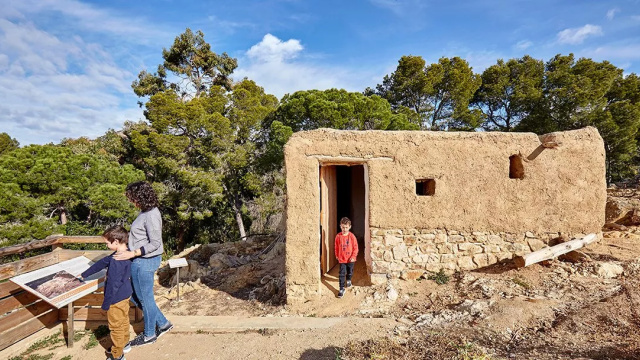Cultural Lloret
Lloret de Mar is like an open museum, you will discover its history as you walk through its streets, squares and streets.

Turó Rodó
The settlement of Turó Rodó is one of three Iberian archaeological sites that can be found around Lloret de Mar and is the closest to the town centre. This small Iberian settlement is located on a small peninsular promontory measuring 40 metres in height, just behind the iconic D’en Plaja Castle.
This rocky promontory crowns the small cove of Sa Caleta, located at the very start of the coastal trail from Lloret to Tossa. Archaeological remains found here suggest that the site served both as a vantage point and as a commercial hub for trading with other villages around the Mediterranean.
Turó Rodó is a definite must-see for those who are curious to learn how the first inhabitants of Lloret de Mar lived, as it contains a replica of an Iberian house built with authentic methods and materials that reflect the time period. It’s also a great way to see a panoramic view of the bay of Lloret.
This small village, dating back to the 3rd century B.C., was likely a precursor to a larger Iberian settlement located further inland: Montbarbat.

























